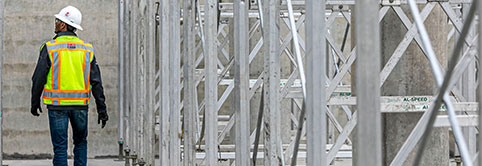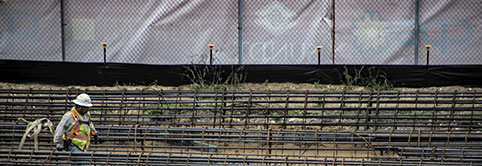Transparency & Visual Management
Introduction to Transparency & Visual Management
In construction projects, communication breakdowns are a common source of waste. A communication breakdown could lead to a team member not knowing about a process change, prevent someone from being able to accomplish their task, or cause materials or tools to go missing, as just a few examples.
Communication breakdowns can lead to a number of additional issues such as increased budget sizes, loss of trust in team members, and backed up timelines.
One of the main purposes of Lean implementation is to align the goals of teams and team members in order to encourage better communication, creating a space where the success of one person means the success of the entire team.
Transparency & Visual Management are key methods for streamlining communication between team members and allowing people on a project to collaborate, leading to a better outcome for the stakeholders and more profits for those working on the project.
What is Visual Management?
Placing tools, parts, production activities, plans, schedules, measures and performance indicators in plain view. This assures that the status of the system can be understood at a glance by everyone involved and actions taken locally in support of system objectives.
Transparency in the Built Environment
In general, the built environment is not a very transparent industry.
When using traditional project delivery, designers, construction teams, and trades are often not transparent about numbers, costs, timelines, and the like. Meanwhile, owners often hide their real budgetary restrictions from the teams they’re working with.
Though there are certainly teams and individual members who are transparent and genuinely want the best for the project they’re working on, there are many people who spend time trying to game the system to “put them ahead,” as if working together was a competition rather than a collaborative effort.
This lack of transparency dissolves trust between the teams working together. This puts each team in a situation where they are doing what is best for themselves as opposed to what is best for the outcome of the project and its stakeholders.
This is one of the many benefits of utilizing Integrated Project Delivery to complete construction projects. If you’re working in a project using IPD, you have to become transparent because the success of each individual team is contractually linked together.
When teams are fully transparent, processes can more easily improve so the team can generate a more satisfactory final outcome – and more profit for everyone involved.
How Does Visual Management Work?
The purpose of Visual Management is to increase Transparency and the flow of communication using indicators that are easy to see. These indicators simplify and convey information that may otherwise seem complex.
Properly-executed Visual Management techniques allow team members to accomplish a number of things, including: identifying problems in the workflow, seeing whether the team is on pace to meet the Conditions of Satisfaction, and efficiently and non-verbally communicating necessary information.
When applying Visual Management techniques to your processes, here are some things to consider.
1. Every Team is Different
What works for some teams may not work for others. Determine what is visually needed for your workflow and what would be beneficial to include in meetings and discussions.
2. Go to the Work
Conduct your team’s meetings in a visual workspace to better visualize the workflow. This can be a space with visual boards or displays that can aid in discussion, or where the work is being done.
3. Continuously Improve
Just like in all facets of Lean thinking, the team should constantly be analyzing and improving communication tools and tactics to see where communication can be further streamlined and where information can become more transparent.
4. Create Urgency
Lean Visual Management cues should instill a sense of urgency in the responsible parties, such as with an Andon system where a flashing red light informs the team that a problem requires immediate attention. Whatever communication tactics are in place, they should push team members to act quickly so as not to cause delays.
Benefits of Visual Management
Visual Management makes construction projects in a number of ways, including…
1. Streamlines Communication
There’s a reason that everyone – from professional athletes to the military to manufacturing workers – uses visual signals daily: they’re effective. Visual indicators can often convey complex streams of information in seconds, quickly getting everyone on the same page so that work can be done.
2. Prevents Mistakes
Transparent communication, aided by clear visual cues, can align multiple different teams to make hand-offs clean and easy. Fewer mistakes means less waste, which means more time and effort can be spent creating value.
3. Serves as an Archive
A Lean Visual Management tool such as a Kanban board helps teams see what work needs to be done at the moment. It also provides the team with information on what has been done already, serving as an archive of the work that has been completed.
4. Refocuses Priorities
Visual indicators paint a clear picture to the team. This helps to refocus the team’s priorities on the task at hand and serves as a reminder for what the project objectives are.
5. Improves Safety
Construction projects involve heavy machinery and materials. One miscommunication could lead to a serious injury in the workplace. If the team is communicating in a clear and healthy way, the danger to individual members is significantly lessened.
Examples of Lean Visual Management Tools
Lean Assessments
How strong is your Lean knowledge? Take a Lean assessment to determine your current state so you have a baseline for improvement. Lean assessments are available for individuals, teams, and organizations alike. Whether you’re new to Lean or are an experienced Lean practitioner, Lean assessments are a great way to get started at LCI!
TAKE ASSESSMENTMore Lean Topics
From 5s to IPD, explore popular Lean design and construction topics below.




